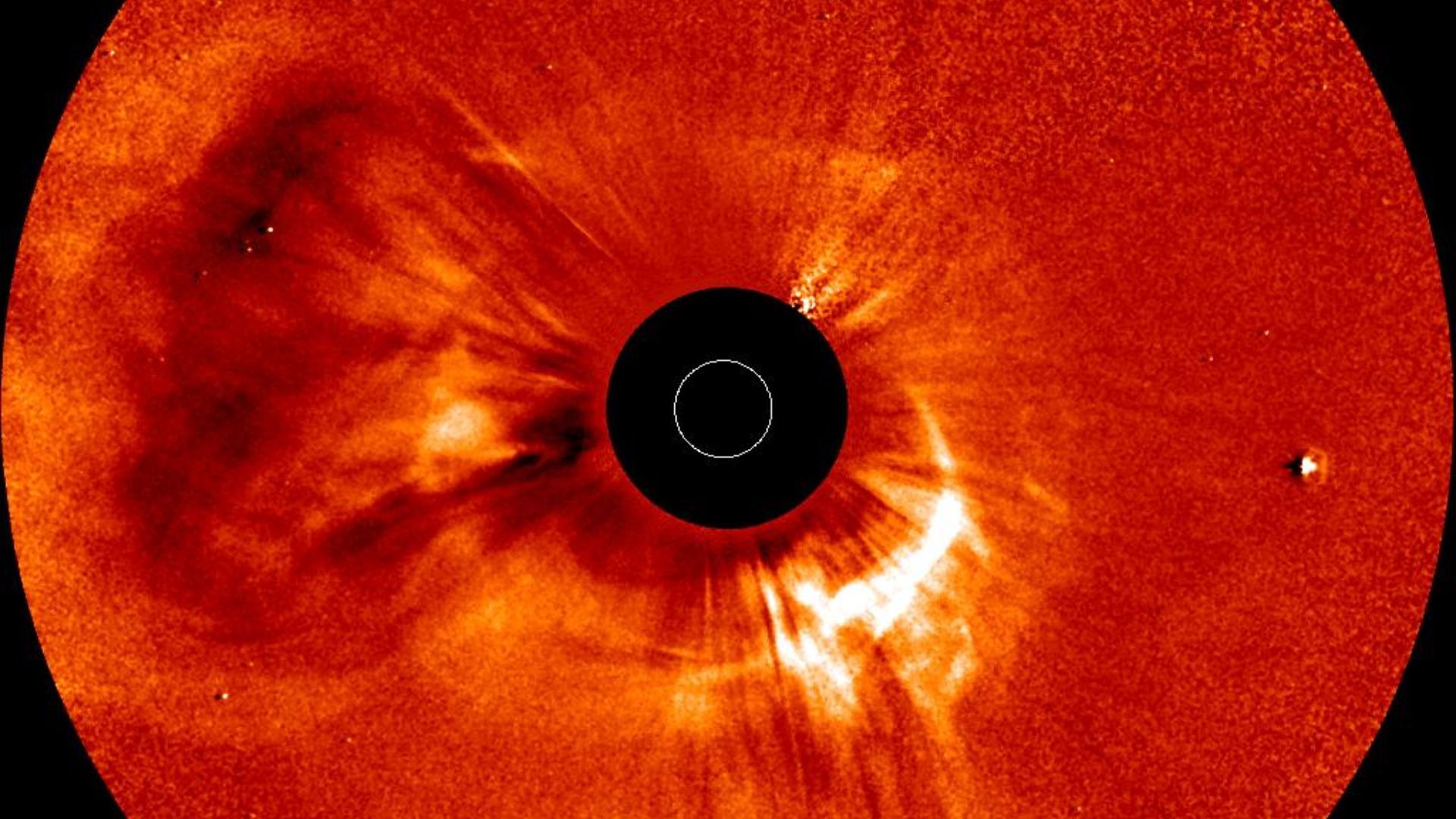New Delhi: A series of coronal mass ejections (CMEs) unleashed by the Sun in May last year piled up in interplanetary space, reaching the Earth on 10 May, 2024, resulting in the most severe geomagnetic storm in 20 years. CMEs consist of plasma ejected violently from the Sun, that can interact or cannibalise each other as they move at different speeds through the Solar System. On reaching the Earth, these clouds of magnetised particles from the Sun can induce geomagnetic storming by interacting with the geomagnetic field of the Earth.
The geomagnetic storming on 10 May 2024 was linked to six different CMEs that erupted in succession, associated with solar flares and filament eruptions. Due to the limited capability of the observations close to the Sun as well as the distance between the Sun and the Earth, there are gaps in the understanding of how CMEs evolve thermodynamically while travelling through interplanetary space. Researchers from the Indian Institute of Astrophysics (IIA) have used sophisticated modelling to trace the paths, temperatures and magnetic states of these CMEs as the expanded across the Solar System.
First study to track thermodynamic evolution of multiple interacting CMEs
A paper describing the research has been published in Astronomy & Astrophysics. Lead author of the paper, Soumyaranjan Khuntia says, “Using wide-field coronagraphic data and an analytical framework known as the Flux Rope Internal State (FRIS) model, we tracked the thermodynamic evolution of six CMEs and their mutual interactions in interplanetary space. Our analysis demonstrates that CME-CME interactions lead to significant thermal restructuring within. By the time they reach the Earth, the electrons in the complex ejecta were found to be in the heat-releasing state, while ions displayed a mix of heating and cooling behaviour, with the heating state being the dominant mode overall.”
